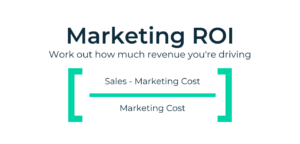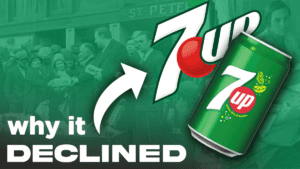I have compiled a list of basic marketing terms any marketer should know. Understanding fundamental marketing terms is a good foundation and start to learn marketing and understand marketing discussions. You may already be familiar with some.
Here are 18 Top Basic Marketing Terms You Should Know
Marketing
Marketing is the process of engaging customers and managing customer relationships by creating offerings that have superior value for them and capturing profitable value from customers in return.
Market offerings
Some combination of products, services, information, or experiences offered to a market to fulfill consumers’ needs and wants. Market offerings are not limited to physical products. They also include services— activities or benefits offered for sale that are essentially intangible and do not result in ownership. Examples include banking, airline, hotel, retailing, and home repair services.
Marketing Myopia
A lack of Marketing Foresight. It is the failure and narrow-minded approach of marketing management of a company that is paying more attention to particular attributes of the product or service than to the benefits and experiences produced by these products
Markets
A market is a group of actual and potential buyers of market offerings such as products or services. A specific need or want can be fulfilled through exchange relationships
Marketing Management
This is the art and science of choosing target markets and having profitable relationships with them.
Value Proposition
A brand’s value proposition is the particular set of benefits or values it promises to deliver to customers to satisfy their needs and wants. It differentiates one brand from another and makes clear why you should choose their products or services over other competitor’s
Customer-Perceived Value
The process of the evaluation carried out by the customers of the difference between all the benefits and all the costs of a market offering in relation to those of competing offers. Most customers purchase and use these companies’ products and services that offer the highest customer-perceived value.
Customer Satisfaction
It is a measure of how well a product’s perceived performance matches a buyer’s expectations. If the product’s performance matches less than expectations, the customer is dissatisfied. If the performance meets customer expectations, the customer is satisfied.
Customer-Engagement Marketing
This is a strategy that the company tries to increase the customers’ engagement with the brand in conversations and daily lives through personalization and relationship building. The rise of the internet and social media are making customer engagement marketing gets better. Nowadays, customers are more informed, more connected, and more empowered than ever before
Customer Lifetime Value(CLV)
Customer lifetime value is the total amount of money a customer is expected to spend on a company’s products or services during their lifetime. It shows a measurement of how valuable a customer is to the company. Understanding CLV helps businesses develop strategies to gain new customers and retain existing ones while maintaining profit margins
Customer Equity
It is the total sum of customer lifetime values of all of the company’s existing and potential customers. This allows marketers to estimate the future value(revenue) of the company’s customer base. Clearly, The higher the customer equity, the higher the revenue a company gets and the more valuable it becomes on the market
Mission Statement
A mission statement is a statement of the company’s purpose and declares how they serve its audiences. It often includes a description of an organization, its function, and its objectives. Some missions are defined myopically by companies in product or technology terms like “ we make and sell household items”. Missions should be market-oriented and defined in terms of fulfilling basic customer needs. For example, IKEA’s mission statement: To create a better everyday life for many people.
Marketing Strategy
It is a plan and a process of creating customer value and achieving profitable customer relationships. It allows the company decides which customers it will serve (segmentation and targeting) and how (differentiation and positioning).
Market Segmentation
The process of splitting a market into different categories of buyers who have different needs, characteristics, or behaviors and who might require separate marketing strategies and mixes. Common examples of market segmentation consist of geographic, demographic, psychographic, and behavioral.
Market Targeting
Market targeting is evaluating each market segment’s attractiveness and choosing one or more segments to serve. If the organization is small and with limited resources might serve only one or a few special segments or market niches
Behavioral Targeting
The use of online tracking data to target online ads and marketing offers to specific consumers. For Example, If you search for Sports shoe products on Google, later you might be targeted by some brands’ ads that sell shoes.
Market Positioning
Market positioning is to create a unique identity or image of the brand in the minds of target customers. After determining which market niche to fill, the organization must decide how to differentiate its products or services for each target segment and what positions it wants to capture in those segments. At this time, positioning processes will work.
Marketing Return on Investment (marketing ROI)
ROI is a way of calculating the return (net return) that the organization gets from investing in marketing. It allows the company to determine the amount spent on marketing drives profits. ROI formula:
(Sales Growth – Marketing Cost) / Marketing Cost = ROI
Read more here







